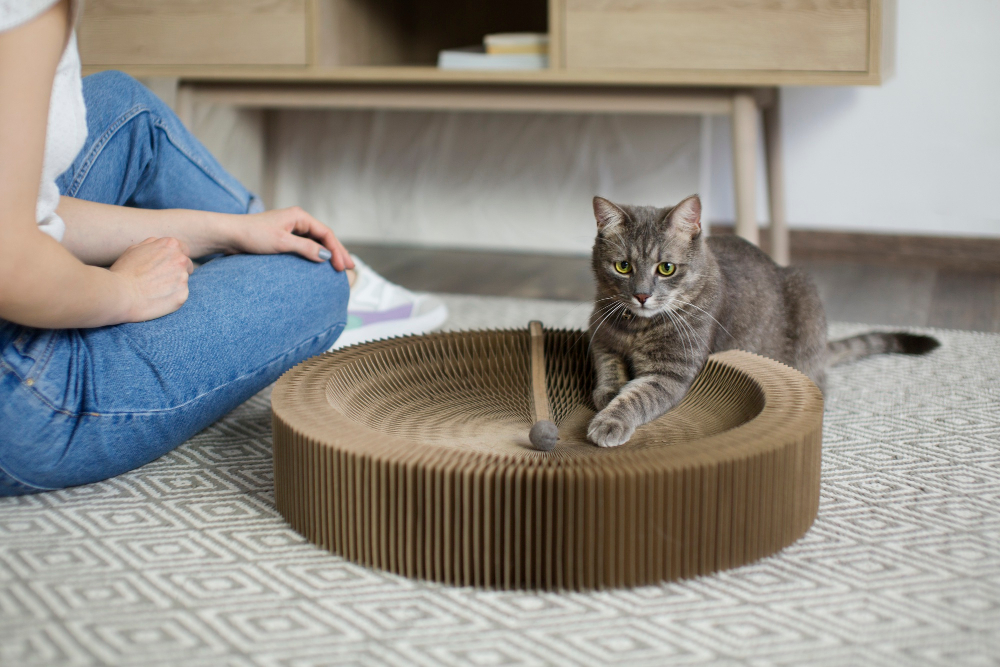
The Environmental Impact of Cat Litter
Cat litter is a common household item for those who own cats. However, its disposal can have a significant environmental impact if not done properly. Traditional cat litter is often made from non-biodegradable materials, such as clay or silica, which can take hundreds of years to decompose. As a responsible cat owner, it is essential to understand the environmental consequences of cat litter disposal and take steps towards more sustainable solutions.
Common Challenges When Disposing of Cat Litter
When it comes to disposing of cat litter, cat owners face several challenges. Firstly, traditional cat litter is often mixed with urine and feces, making it unsuitable for regular waste disposal. This can lead to increased landfill waste and pollution. Secondly, the packaging used for cat litter, such as plastic bags, further contributes to environmental issues. These challenges call for alternative methods of cat litter disposal that are both safe and eco-friendly.
Tip 1: Choose Eco-Friendly Cat Litter Options
One of the most effective ways to dispose of cat litter sustainably is to choose eco-friendly cat litter options. There are several environmentally-friendly alternatives available on the market today. Look for cat litter made from natural materials, such as recycled paper, wood pellets, or coconut husk. These options are biodegradable and do not contribute to landfill waste. Additionally, they are often free from harmful chemicals, making them safe for both your cat and the environment.
Tip 2: Use Biodegradable Cat Litter Bags
Another important consideration when disposing of all the cat litter inside of your modern cat litter box is the type of bags used for disposal. Traditional plastic bags take hundreds of years to decompose, further contributing to environmental pollution. Instead, opt for biodegradable cat litter bags made from materials like cornstarch or plant-based plastics. These bags break down naturally over time, reducing their impact on the environment. Remember to check if the bags are certified as biodegradable and compostable to ensure their eco-friendliness.
Tip 3: Properly Dispose of Cat Litter Waste
Proper disposal of cat litter waste is crucial to minimize its environmental impact. Never flush cat litter down the toilet, as it can contaminate water sources and harm marine life. Instead, scoop the waste and place it in a dedicated cat litter disposal bag. Tie the bag securely and dispose of it in the regular trash bin. It is essential to separate the cat litter waste from other household waste to prevent cross-contamination. By following this method, you can ensure that the waste is disposed of safely and responsibly.
Tip 4: Consider Composting Cat Litter
If you have access to a backyard or garden, composting cat litter can be a sustainable solution. However, it is important to note that not all cat litter is suitable for composting. Only use cat litter made from biodegradable materials, such as wood pellets or corn-based litter. Avoid using cat litter made from clay or silica, as these materials do not decompose properly and can harm the soil. When composting cat litter, create a separate compost pile dedicated solely to pet waste. This ensures that the compost is used only for non-edible plants and not for any crops or vegetables.
Tip 5: Explore Alternative Disposal Methods
Aside from traditional disposal methods, there are alternative options to consider for cat litter disposal. Some municipalities offer special cat litter waste collection services, where the waste is treated separately to prevent contamination. Research if such services are available in your area and take advantage of them. Another option is to use a pet waste composting system specifically designed for cat litter. These systems use a combination of natural processes to break down cat waste and litter, resulting in nutrient-rich compost.
Benefits of Environmentally-Friendly Cat Litter Disposal
Adopting eco-friendly cat litter disposal methods offers several benefits. Firstly, it reduces the amount of non-biodegradable waste that ends up in landfills, helping to preserve the environment for future generations. Secondly, environmentally-friendly cat litter options are often safer for your cat, as they are free from harmful chemicals. Additionally, composting cat litter can result in nutrient-rich soil that can be used to nourish plants in your garden. By making these small changes, you are contributing to a greener and more sustainable future.
Additional Resources for Eco-Friendly Cat Litter Solutions
If you want to learn more about eco-friendly cat litter solutions, there are several resources available to help you make informed decisions. Websites such as the Environmental Protection Agency (EPA) and the Humane Society provide valuable information on sustainable cat litter options and proper disposal techniques. You can also consult with your local veterinarian or pet store for recommendations on eco-friendly cat litter brands. By educating yourself and staying informed, you can make conscious choices that benefit both your cat and the environment.
Conclusion
When it comes to disposing of cat litter, it is important to prioritize eco-friendly solutions. By choosing environmentally-friendly cat litter options, using biodegradable bags, properly disposing of cat litter waste, considering composting, and exploring alternative disposal methods, you can significantly reduce the environmental impact of cat litter disposal. These small changes can make a big difference in preserving our planet's resources and ensuring a sustainable future. As responsible cat owners, let us take the necessary steps to protect our environment and keep our furry friends happy and healthy.
You may also like
5 Major Environmental Benefits of Synthetic Grass
The Benefits of Sustainable Landscaping
What Makes Bamboo Products More Sustainable?
10 Benefits of Composting For the Environment
